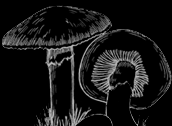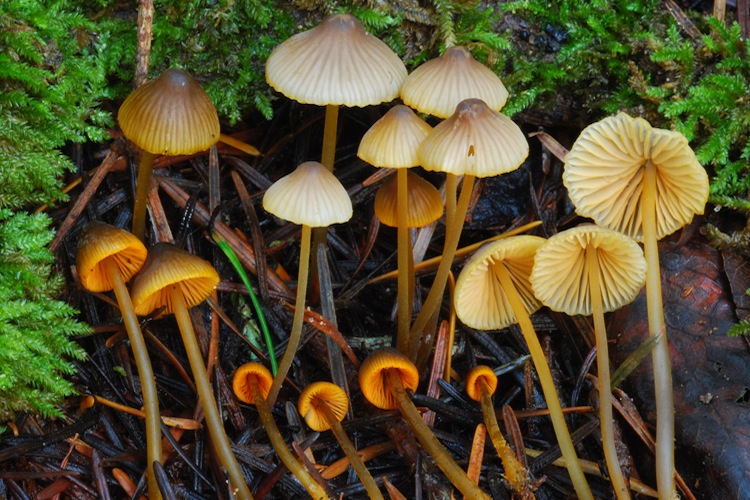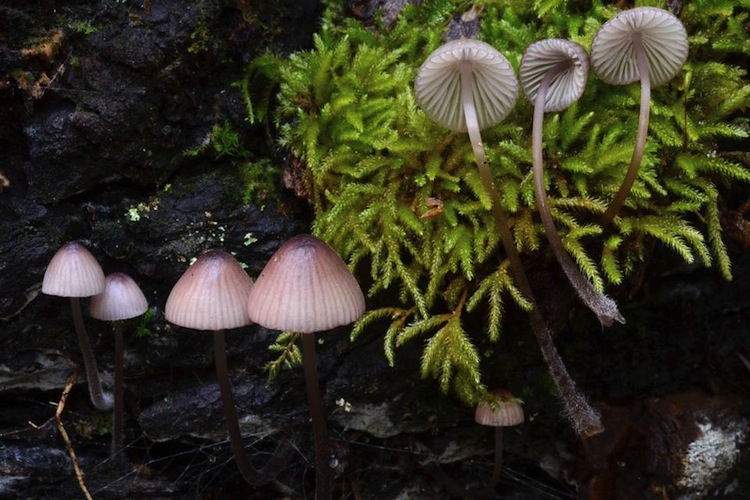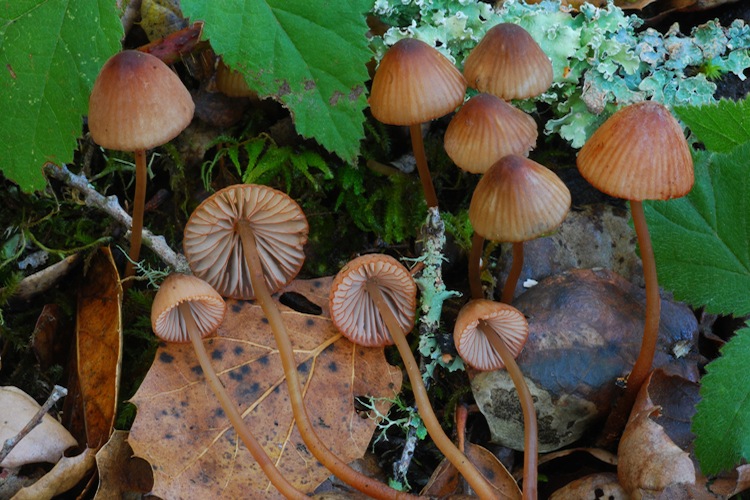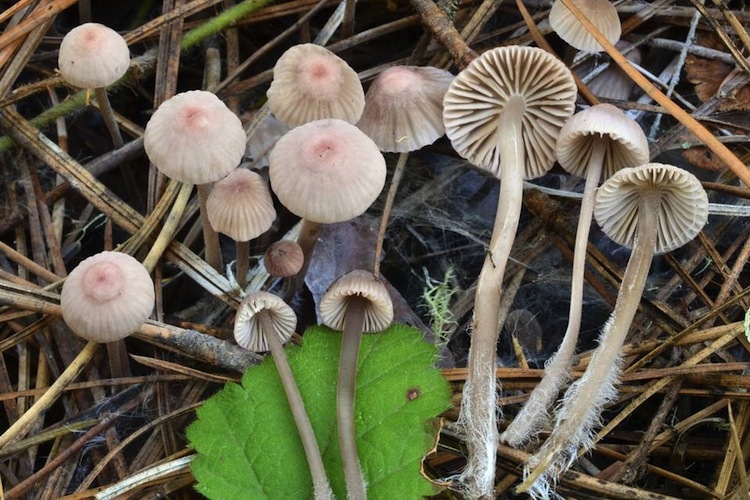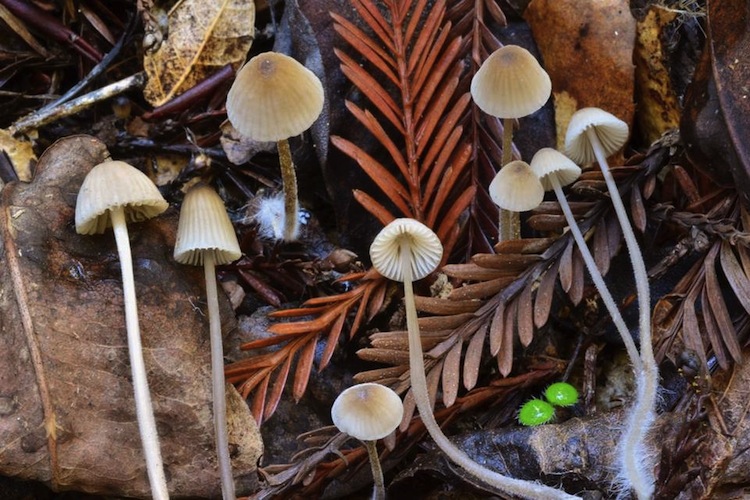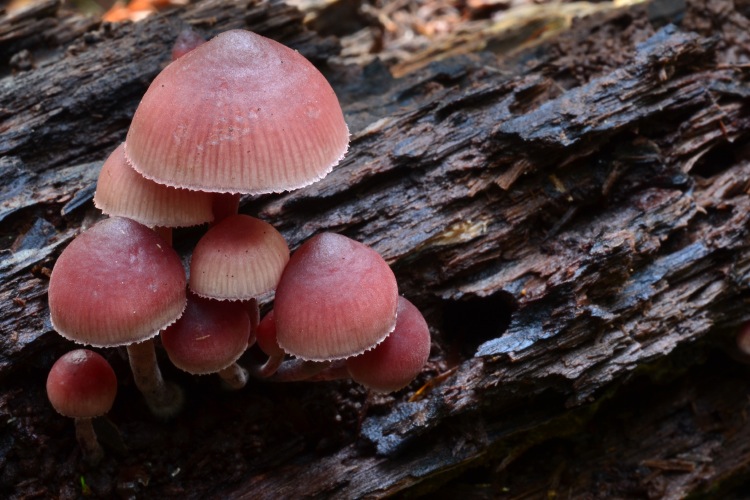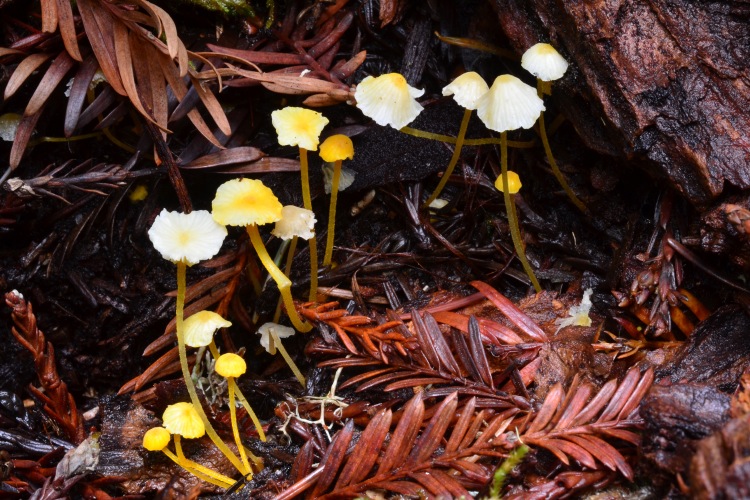Genus: Mycena
Known Species in the County
- Mycena acicula – Coral Pink Mycena
- Mycena aurantiomarginata – Orange-gilled Mycena
- Mycena bulliformis
- Mycena californiensis – Californian Bleeding Mycena
- Mycena capillaripes – Bean Sprout Mycena
- Mycena chloranthoides
- Mycena clavicularis
- Mycena epipterygia – Yellow-stemmed Mycena
- Mycena galericulata
- Mycena galopus – Milky Mycena
- Mycena haematopus – Bleeding Mycena
- Mycena leptocephala – Dark Mycena
- Mycena maculata – Red-spotted Mycena
- Mycena meliigena
- Mycena oregonensis – Western Yellow Mycena
- Mycena pura – Lilac Mycena
- Mycena purpureofusca
- Mycena sanguinolenta
- Mycena Section Sacchariferae
- Mycena subcana
- Mycena tenax
Approximately 21 species in Santa Cruz County.
Mycena Records from Santa Cruz County:
Mycena are very familiar mushrooms of the winter conifer forests, often fruiting in immense numbers and forming 'carpets' in the duff. The typically broadly-conical to conical striate caps, tall, very slender stature, and pallid gills distinguish the genus from most others. Atheniella are very similar in most respects, and were only recently segregated from Mycena. Most (with some exceptions) of the species in our area are evenly brightly colored.
All are saprobic, preferring deep leaf and/or needle duff, but some grow on moderate-sized wood debris. None are valuable as food, and none are known to be toxic.
The diversity of the genus in our area is uncertain but likely quite high. The gray and brown species are difficult to distinguish from one another without familiarity and practice.
Important identification characters include coloration, texture of the cap and stipe surface (this can be very fine and delicate so handle the fruitbodies carefully), presence or absence of liquid exuding from the base of the stipe when broken, substrate (needles, leaves, wood, duff?), and many microscopic details of the pileipellis, lamellar and stipe cystidia, and spores.
